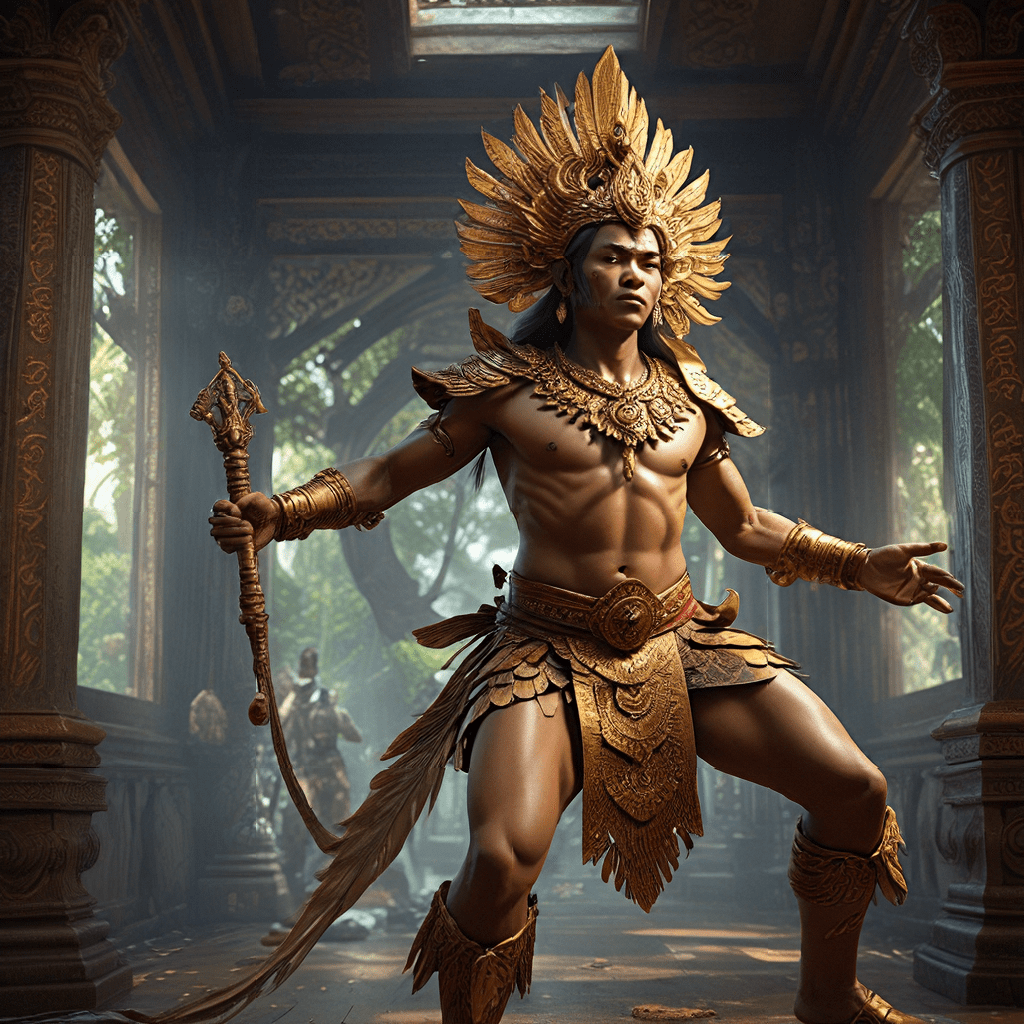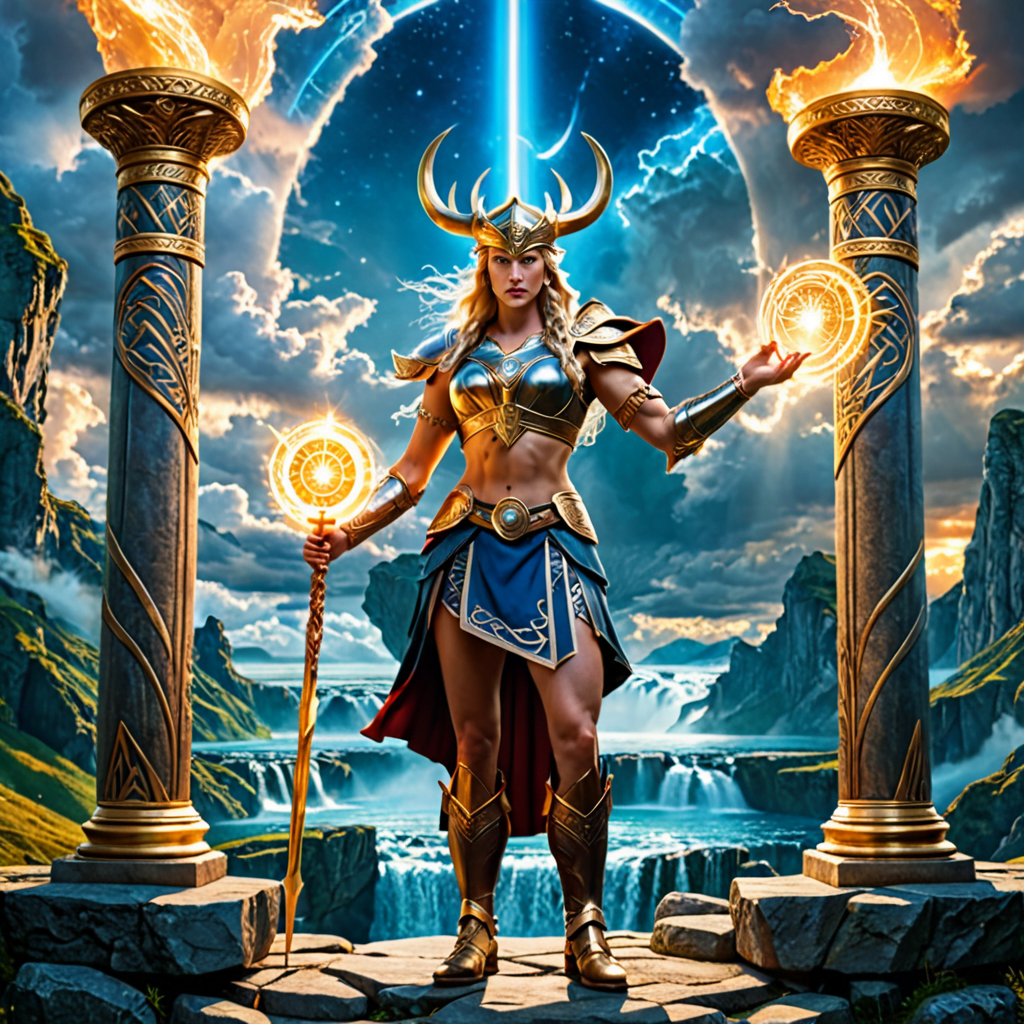Indonesian Mythology: A Tapestry of Diverse Beliefs
Indonesian mythology is a vibrant tapestry woven from the diverse beliefs and stories of its many islands and cultures. It's a rich and fascinating world filled with gods, spirits, and mythical creatures that reflect the unique history and landscape of this archipelago. From the majestic mountains of Sumatra to the lush rainforests of Borneo, each island holds its own unique myths and legends that have been passed down through generations.
Whether it's the tale of the creation of the world, the origin of certain animals, or the stories of brave heroes and mischievous spirits, Indonesian mythology offers a glimpse into the values, beliefs, and worldview of the Indonesian people. It's a treasure trove of stories that reveal the intricate relationship between humans and nature, the importance of community and family, and the power of faith and spirituality.
The myths of Indonesia are not just mere stories; they are a living tradition that continues to shape the lives and imaginations of the people. These stories are often told during festivals and ceremonies, reflecting the deep-seated connection between myth and daily life in Indonesian culture.
Tales of Transformation: Exploring the Essence of Indonesian Mythology
Transformation is a recurring theme in Indonesian mythology. These stories often depict characters undergoing profound changes, whether it's a human transforming into an animal, a god taking on a human form, or a spirit possessing a living being. These tales of transformation are not merely fantastical stories; they reflect the deeper anxieties and aspirations of the people who created them.
Take, for instance, the mythical creature "Garuda," a giant bird-like creature that is half-human and half-eagle. Garuda is often depicted as the mount of the Hindu God Vishnu, symbolizing the transformation of the mundane into the divine. This potent symbol highlights the power of transformation to transcend the limitations of the human form and reach a higher spiritual plane.
Another captivating example is the myth of the "Siluman," shapeshifting spirits that can take on the form of animals or humans. This story reflects the belief that the supernatural can be both benevolent and malevolent, and that the power of transformation can be used for both good and evil.
The tales of transformation in Indonesian mythology are not just about physical changes but also about inner growth and spiritual evolution. They teach us about the possibilities of change, the importance of self-discovery, and the potential for both good and evil that resides within all of us.
From Gods to Spirits: The Panoramic View of the Supernatural Realm
Indonesian mythology is a diverse tapestry of supernatural beings that populate the world beyond our immediate perception. These beings play a significant role in shaping the lives of humans, dictating their destinies and influencing their beliefs.
At the top of the hierarchy are the "Dewata," the gods that represent the forces of nature and the powers that govern the universe. These deities are often revered as benevolent beings that provide protection and guidance, and their stories are rich with moral lessons and ethical principles. Some prominent deities include Batara Guru, the king of the gods, and Dewi Sri, the goddess of rice and fertility.
Alongside the gods are a vast array of spirits, known as "Makhluk Halus," inhabiting the natural world. These spirits can be either benevolent or malevolent, and their interactions with humans can range from playful pranks to life-altering curses. Examples include the "Tuyul," mischievous spirits that steal money, and the "Kuntilanak," a female spirit who haunts cemeteries.
This diverse cast of characters reflects the complex relationship humans have with the world around them. It highlights the awareness of unseen forces at play, the need for respect for the natural world, and the importance of maintaining a balance between the realms of the human and the divine.
The Power of Myth: Examining the Role of Transformation in Shaping Cultural Identity
Indonesian myths and legends are more than just stories; they are fundamental to the cultural identity of the archipelago. These tales offer a framework for understanding the world, interpreting experiences, and passing down values and traditions across generations.
The constant theme of transformation in Indonesian mythology reflects the dynamism of the Indonesian people and their ability to adapt to changing circumstances. It teaches them to embrace change, to see potential for growth even in the face of adversity, and to understand that life is a continuous process of evolution.
The stories also highlight the importance of community and social responsibility. Many myths involve heroes who sacrifice themselves for the greater good, or who work together to overcome challenges. These narratives reinforce the importance of cooperation, empathy, and the shared responsibility for the well-being of the community.
Furthermore, the myths serve as a powerful expression of the Indonesian cultural identity. The stories of heroes, gods, and spirits are deeply interwoven with the landscape, traditions, and beliefs of the various islands, showcasing the diversity and richness of Indonesia's heritage.
Mythological Figures as Symbols of Transformation: Decoding the Symbolic Value
Many of the characters in Indonesian mythology represent powerful symbols of transformation and evolution. Their stories are not just entertaining narratives; they are rich with symbolic meaning that reveals the complexities of human experience and the relationship with the natural world.
One prominent example is the "Naga," a mythical serpent-like creature that often embodies transformation and rebirth. The Naga is associated with water and fertility, symbolizing the cycle of life and death, and the transformative power of nature.
Another noteworthy figure is the "Jaka Tarub," a young man who falls in love with a nymph, the "Nyai Roro Kidul." This enchanting story explores the themes of desire, forbidden love, and the dangers of defying the laws of nature. The Nyai Roro Kidul, who resides in the South Sea, embodies the power of the ocean and the unpredictable forces of nature.
These mythological figures serve as powerful symbols that inspire awe, wonder, and reflection. They offer a lens through which individuals can better understand their own lives and the world around them. Through these stories, Indonesians have developed a deeper connection with their heritage, their environment, and their own potential for growth and transformation.
The Journey of Creation: Unraveling the Myths of the Origins of the World
Indonesian mythology offers fascinating insights into how different cultures across the archipelago understand the origins of the world. These creation myths often feature deities and supernatural forces, highlighting the significance of the spiritual realm in shaping the universe.
In some stories, the world is created from a cosmic egg, symbolizing the potential for life that exists within the universe. Other myths describe the world being formed from the bodies of deities, highlighting the divine origin of creation. One common myth in Java tells the story of Sang Hyang Tunggal, the supreme deity, who creates the world from his own essence. Another fascinating account from the island of Bali narrates how the earth is formed from the tears of a goddess, highlighting the power of emotions in shaping reality.
These creation myths offer a framework for understanding the world and our place within it. They emphasize the importance of respect for the natural world and the interconnectedness of all living beings. They also serve as a reminder of the inherent power of creation and the potential for good and evil that lies within the universe.
The Power of Ritual and Sacrifice: Unveiling the Importance of Transformation in Daily Life
In Indonesian mythology, rituals and sacrifices play a vital role in maintaining harmony between the human and the divine realms. These practices are often seen as ways to appease spirits, honor deities, and ensure prosperity.
Many rituals involve offerings of food, flowers, and incense, symbolizing the connection between the human world and the spiritual realm. These offerings are often placed at sacred sites, such as temples, shrines, and ancestral graves.
Sacrifices can take various forms, ranging from the offering of animals to the performance of specific dances or chants. These acts are viewed as ways to communicate with the supernatural beings and seek their blessings.
The rituals and sacrifices of Indonesian culture reflect the belief that human actions can influence the world around them and impact the lives of others. They highlight the importance of respect for the spirits and deities, and the need for individuals to play their part in maintaining the delicate balance between the human and the divine.
The Influence of Hinduism and Buddhism: Analyzing the Integration of Foreign Influences
Indonesia's history is marked by a rich exchange of cultural influences, including the introduction of Hinduism and Buddhism from India. These faiths have significantly impacted Indonesian mythology, introducing new deities, rituals, and philosophical concepts that have intertwined with existing beliefs.
The arrival of Hinduism brought with it a pantheon of gods and goddesses, including Vishnu, Shiva, Brahma, and Durga. These deities were often incorporated into existing myths and legends, blending with indigenous beliefs and creating a unique blend of Hindu-Indonesian mythology.
The adoption of Buddhism introduced concepts like karma, reincarnation, and enlightenment. These ideas were integrated into existing narratives, shaping Indonesian beliefs about the nature of existence, the pursuit of spiritual liberation, and the importance of compassion and ethical conduct.
The integration of these foreign influences has resulted in a vibrant and diverse mythology that reflects the complexity of Indonesian cultural history. It highlights the ability of indigenous cultures to adapt and evolve, incorporating external influences while retaining their own unique identities.
The Importance of Oral Tradition: Understanding the Transmission of Myths Across Generations
In many parts of Indonesia, myths and legends are passed down through generations through oral tradition. This practice plays a crucial role in preserving the cultural heritage of the archipelago and conveying valuable insights about the past.
Storytellers, often elders or respected members of the community, play a pivotal role in transmitting these narratives. They weave tales of heroes, gods, and spirits, using vivid language and dramatic storytelling to captivate their audiences. These stories are often shared during community gatherings, festivals, and special occasions, serving as a powerful tool for education, entertainment, and cultural bonding.
The practice of oral storytelling ensures that these myths remain alive and relevant, providing a valuable link to the past and a shared cultural identity for the people of Indonesia. It also highlights the importance of community and the role of storytelling in preserving cultural heritage.
Evolution of Indonesian Mythology: A Dynamic System of Beliefs and Stories
Indonesian mythology is not static; it is a dynamic system of beliefs and stories that continues to evolve and adapt over time. New myths emerge, older narratives are reinterpreted, and traditional beliefs are often blended with modern influences.
This ongoing process of evolution reflects the changing social, political, and economic realities of Indonesian society. The incorporation of modern themes, such as technology and globalization, into traditional narratives highlights the ability of mythology to remain relevant and engaging.
This dynamic nature of Indonesian mythology ensures that it remains a living tradition, constantly reflecting the evolving worldview of the Indonesian people. These stories continue to inspire, teach, and entertain, providing a powerful tool for understanding the present and shaping the future.
FAQs
What are some common themes in Indonesian mythology?
Common themes in Indonesian mythology include transformation, the power of nature, the relationship between humans and the supernatural, the importance of community, and the journey of spiritual enlightenment.
What are some of the most important figures in Indonesian mythology?
Some of the most important figures in Indonesian mythology include Batara Guru (the king of the gods), Dewi Sri (the goddess of rice and fertility), Garuda (the mythical bird-like creature), and the Siluman (shapeshifting spirits).
How is Indonesian mythology related to daily life?
Indonesian mythology is deeply intertwined with daily life, influencing rituals, ceremonies, beliefs, and cultural practices. Stories and characters from mythology are often used to explain natural phenomena, understand social roles, and guide ethical behavior.
What are some ways to learn more about Indonesian mythology?
There are many ways to learn more about Indonesian mythology. You can explore books, articles, and websites on the subject, visit museums and cultural centers dedicated to Indonesian art and history, and attend traditional performances and storytelling events.



